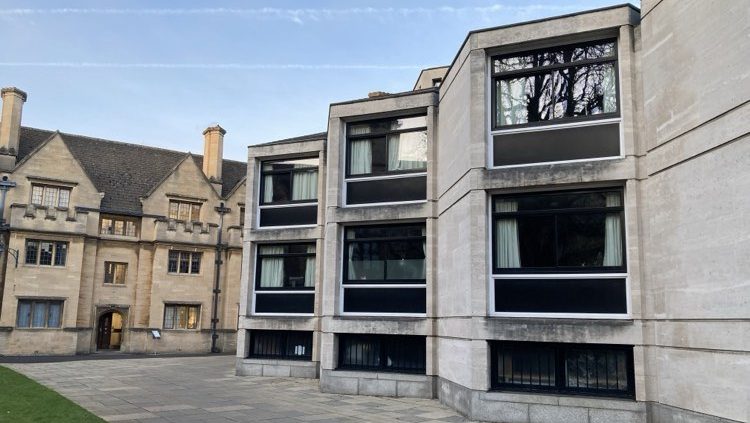“The city’s dreaming spires are being crowded out by architectural eyesores.” This was the central claim of an article I read in The Spectator last May prefaced ‘The Sad Decline of Oxford’. In it, the author quotes Bill Bryson who argues that: “[Oxford] is a beautiful city that has been treated with gross indifference and lamentable incompetence”.
As a student at St John’s, it is hard not to appreciate Bryson’s point. Indeed, I am reminded of it every day on my walk to the library as I am forced to confront the horrors of the Sir Thomas White Quad, which was affectionately described to me as looking like the “remnants of Chernobyl” in my freshers week (I’m pleased to report a distinct lack of nuclear waste, only the occasional spot of black mould). I sympathise greatly with the poor students forced to live opposite the “Beehive”, a post-war eyesore that clashes greatly with the rest of the 19th century Quad it was lumped into the corner of. The style of these modernist monstrosities is described by the College as “confidently looking forward”. Many, like Bryson, bemoan this attitude, seeing all the charm of the “city of dreaming spires” being stifled by soulless, functionalist architecture.
Perhaps there is some truth to this. I am not writing here to argue that Oxford is not littered with “ugly” buildings. I have little interest in defending the Glink or the Social Science Library, for example (I am sure there are too many other examples to attempt to list many more here). Nor do I think that we should “learn to love” Oxford’s ugly buildings (what an uninteresting cliché of an article that would make!). What I do want to suggest, however, is that there is another, perhaps more fruitful, way of understanding these buildings that puts a special significance on what they represent, particularly for those students who might not have been able to attend this University for much of its history.
Brutalism is often one of those funny things best encapsulated by the phrase “I don’t know what it is, but I know it when I see it”. We all pass by buildings that we wished didn’t blot our peaceful morning walks (or in the case of those students who do real degrees) our hurried rush to labs. The ideology of brutalism, however, is harder to define. Roughly, it seems to be the belief in making buildings more open and accommodating for those who will live in or use them, and in the placing of functionality over traditional grandiosity. In effect, it is a democratic style of architecture that seeks not to be grand or beautiful in any traditional sense, but to be tolerant. And indeed, in seeking to do so, it makes no apologies. Perhaps we think it should. Nevertheless, the significance of what these buildings and their inclusive ideology represent to the University’s history should not be snubbed.
In the latter half of the 20th century, attitudes towards university education changed. At the same time as architects were seeking to make buildings more inclusive and open, there were many in university administrations that sought to do the same. The result of these two philosophies combining is what we see today.
Much of the abhorrent architecture we all have to put up with walking by or – God forbid – living in is, whether we like it or not, the product of the University accommodating an increasingly large, diverse, and comprehensive pool of students. As colleges expand, they can afford to take on more students, and thus increase their accessibility. Accessibility and openness might as well be the mortar holding together these brutalist structures they are so deeply ingrained in the architecture’s philosophy.
Of course, there is nothing anyone can do to stop me from continuing to despise any unfortunate encounter I may have with brutalism during my degree. And I will continue to revel in any trips I take to staircases in older parts of my college. However, to hate Oxford’s ‘ugly’ buildings is to hate the natural consequences of the pursuit of the lofty and worthy goals of increased accessibility and openness. So, next time you pass by that one part of your college you really rather wish did not exist or try to hide some particular building while touring a friend around, maybe it is worth pausing and considering what it all really represents.


